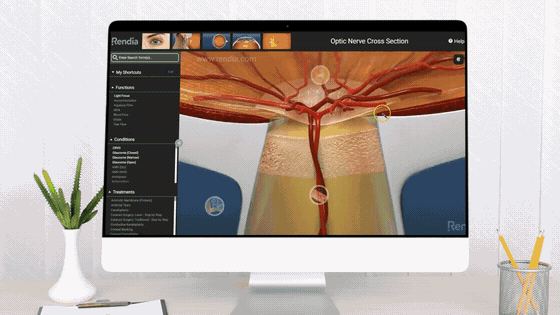Originally published on September 27, 2017
From decor to niche services to technology, here’s how savvy eye care practices stand out
Fresh flowers, striped wallpaper, and elaborate window displays that rival the high-end boutiques of Rodeo Drive or Fifth Avenue is not what you’d expect to find when you visit an optometrist. And that’s exactly what Courtney Dryer, O.D., intended when she opened her private practice, 4 Eyes Optometry, in Charlotte, N.C. in 2013.
“I wanted to be a high-end luxury niche practice,” she wrote in a post on NewGradOptometry.com. “My target market was young professionals, especially women. The idea developed from my own shopping experiences. I would find myself bored in local stores, because the merchandise always looked the same. I wanted unique and different.”
Facing new competition from online retailers and style-savvy direct-to-consumer eyewear brands, eye care practices are upping their game. From improving the aesthetics of your office to focusing on niche services, there are many things you can do to distinguish your practice as a leading eye care provider in your area.
Cultivate that Starbucks style
Looks matter, as Dryer knows. Just as glasses are often the first thing you notice about a person and a clue to their personal style, your practice’s décor is, as well. Believe it or not, your waiting room may have more to do with patients’ overall satisfaction than their medical care. It’s often the first impression patients get of your practice, and they may even spend more time there than in the exam room.
Having an updated, attractive office is one of the main ways you can set your practice apart from the competition. “More eye care practitioners are realizing that the look of their office needs to be on par with national chains like Starbucks, Pottery Barn, and Lenscrafters if they want to attract and keep patients,” wrote Barbara L. Wright, a certified interior designer in North Carolina who has designed more than 600 eye care practices.
She advises practices to focus on seating, lighting, and flooring, in particular. Generic chairs from an office supply warehouse won’t cut it. “When a patient sits down to try a $400 frame on a flimsy $200 chair, it’s no wonder he or she has trouble believing that the frame is really worth that price. Having sturdy, fashionable high-quality chairs with custom upholstery tells the patient that you care about quality and sell high-quality frames,” she wrote. Of course, there are also lots of other, budget-friendly ways to upgrade your office decor.
For more on this topic, download our eBook, How to Design the Perfect Waiting Room for Patients
Offer unique, stylish products
To set yourself apart from chain stores and online retailers, you also need to make sure your product offerings are unique and stylish. While brands like Warby Parker, BonLook, Lookmatic, and Eyefly are doing their best to commoditize eyewear, you can combat this trend by showcasing luxury eyewear lines and independent companies, according to Dryer, who recommends the resource, Luxury Eyewear Forum.
Her preferred eyewear lines include SALT, Europa, SHO Eyeworks, and 141, a U.S. company that donates a new pair of prescription glasses to a person in need with every eyewear purchase. This is a smart strategy for attracting philanthropy-minded millennial customers.
“In my office, I rarely re-order the same frames,” wrote Dryer. “We create excitement by letting our patients know we are always bringing in exclusive merchandise.”
For more on this topic, see How Eye Doctors Can Win Despite Online Retailers
Focus on niche services
Narrowing your focus to specific medical services your practice does well is a key component of differentiating yourself from the competition. If every eye care practice offers pretty much the same procedures, how can you stand out? “Pick a primary focus of core procedures and market those instead of everything on the menu,” recommended Dana Fox, president of the medical marketing company Strategic Edge.
If a large percentage of your patients wear contact lenses, this might mean establishing a specialty contact lens practice. To fight back against 1-800 Contacts, focus on adding value for patients by educating them on new designs and materials and fitting them with the latest contact lens technology, suggested Crystal M. Brimer, O.D., FAAO, in Optometry Times. Rendia makes this easy with dozens of contact lens videos, such as Contact Lenses to Fit Your Lifestyle, that practices can play on their waiting room TV screens to promote specialty products.
“Even the discussion on new technology is something they may not receive elsewhere. You want to ensure your patients know that not only are you up to date, but you also have access to the newest lenses available,” she wrote. Brimer added that it’s important to recognize that value is different than price. “When patients ‘shop’ contact lenses, they are typically centered on price alone. It is our job to create value around the lens we’ve chosen.”
Another way to differentiate is to establish your practice as a Dry Eye Center of Excellence. The estimated 20 to 30 million dry eye sufferers are actively looking for specialists who can help them. Put the word out that you specialize in treating dry eye, and you may not need to market your practice ever again: one dry eye specialist estimated that a whopping 90 percent of his patients are referrals.
For more on this topic, download our eBook, Building Your Dry Eye Center of Excellence—7 Keys to Success!
Wow them with technology
Just as stylish chairs can make a positive impact on patients, so can new technology. From flat-screen TVs showcasing your offerings and services, to iPads that educate patients using a vision simulator to show how an eye condition progresses, patients notice your use of technology – or lack thereof.

Rendia’s interactive anatomy tool, Exam Mode, is sure to impress your patients
“I decided to purchase new electronic phoropters for the ‘WOW! Factor’,” wrote Dryer. “They are expensive, but I get comments daily about how high-tech everything looks. In today’s world, everyone expects the latest technology, including our patients.”
You don’t necessarily need to invest in expensive diagnostic equipment to impress patients. Even an iPad and an app that lets clinicians draw and jot notes directly on a diagram – like Exam Mode – can turn a tablet into a digital sketchpad and enhance doctor-patient communication. It’s about promoting the image of a state-of-the-art practice that’s at the forefront of patient care.
For more on this topic, see mHealth for Small Practices: Which Tools Make the Cut?


